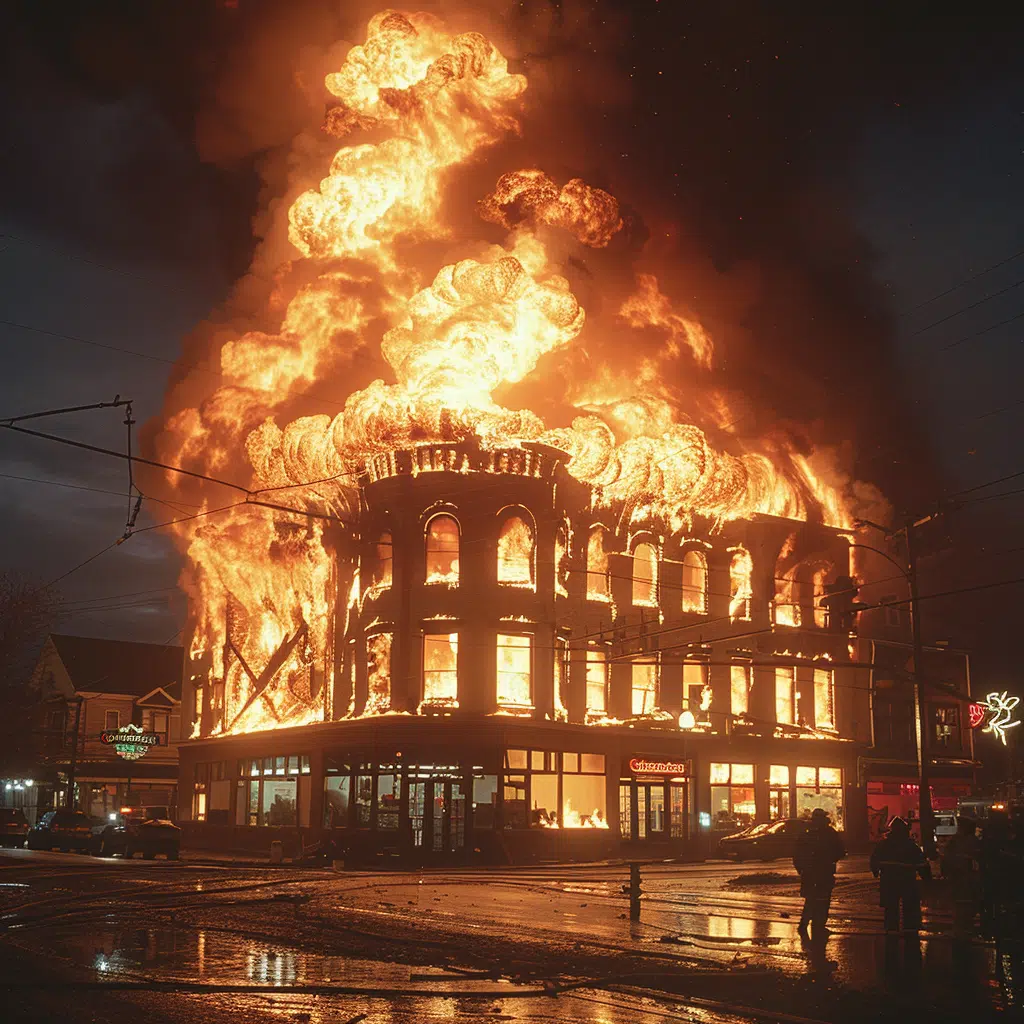Fires can happen anywhere, anytime, and understanding how to prevent them is crucial. The Harford Fire Blog is your go-to resource for everything related to fire safety, prevention, and emergency preparedness. Whether you're a homeowner, business owner, or student, this blog provides valuable insights into staying safe and protecting what matters most.
In a world where disasters can strike unexpectedly, it's essential to stay informed about fire risks and how to mitigate them. Harford Fire Blog not only educates but also empowers individuals and communities with actionable advice and practical solutions.
This comprehensive guide dives deep into the Harford Fire Blog's offerings, including tips, tools, and expert advice on fire safety. By the end of this article, you'll have a solid understanding of how to protect yourself, your loved ones, and your property from fire hazards.
Read also:Ally Lotti Nudes Debunking Myths And Understanding Privacy In The Digital Age
Table of Contents
- About Harford Fire Blog
- Fire Statistics and Trends
- Home Fire Safety Tips
- Business Fire Safety
- Emergency Preparedness
- Choosing the Right Fire Extinguisher
- The Importance of Smoke Detectors
- Creating an Effective Evacuation Plan
- Fire Safety Education
- Additional Resources
About Harford Fire Blog
What Makes Harford Fire Blog Unique?
Harford Fire Blog stands out as a premier resource for fire safety information. It combines expert advice, real-life stories, and actionable tips to help readers stay informed and prepared. The blog covers a wide range of topics, from home fire prevention to industrial safety measures.
The team behind Harford Fire Blog consists of experienced firefighters, safety experts, and educators who are passionate about spreading awareness. Their dedication to saving lives and reducing fire-related incidents is evident in every article they publish.
Target Audience and Purpose
Whether you're a parent looking to safeguard your family or a business owner aiming to protect your employees, Harford Fire Blog caters to diverse audiences. Its primary purpose is to educate and equip individuals with the knowledge needed to prevent fires and respond effectively during emergencies.
Fire Statistics and Trends
Fires remain a significant threat worldwide, causing property damage, injuries, and fatalities. According to the National Fire Protection Association (NFPA), there were over 1.3 million fires in the United States in 2021 alone, resulting in 3,655 civilian deaths and $21.9 billion in property damage.
- Residential fires account for nearly 75% of all fire-related deaths.
- Cooking is the leading cause of home fires and injuries.
- Smoking materials are the top cause of home fire deaths.
Understanding these statistics highlights the importance of fire prevention and preparedness. Harford Fire Blog regularly updates its readers on the latest trends and emerging threats in the fire safety field.
Home Fire Safety Tips
Your home should be a safe haven, but it can also be a potential fire hazard if precautions aren't taken. Here are some essential tips for ensuring home fire safety:
Read also:Jailyne Ojeda Leaks A Comprehensive Analysis Of The Incident And Its Impact
Install Smoke Alarms
Smoke alarms are your first line of defense against fires. Install them on every level of your home, inside each bedroom, and outside sleeping areas. Test them monthly and replace batteries annually.
Practice Fire Drills
Conduct regular fire drills with your family to ensure everyone knows how to evacuate safely. Create an escape plan and designate a meeting point outside the home.
Be Mindful in the Kitchen
Cooking fires are the most common type of home fire. Never leave food unattended while cooking, and keep flammable items away from stovetops.
Business Fire Safety
Businesses must prioritize fire safety to protect employees, customers, and assets. Here are some key strategies for maintaining a safe work environment:
Conduct Risk Assessments
Identify potential fire hazards in your workplace and take steps to eliminate them. This could include properly storing flammable materials, ensuring electrical systems are up to code, and keeping exits clear.
Train Employees
Provide regular fire safety training for all employees. Teach them how to use fire extinguishers, recognize fire hazards, and respond appropriately in an emergency.
Develop an Emergency Plan
Create a comprehensive emergency plan that includes evacuation routes, assembly points, and communication procedures. Share this plan with all employees and conduct drills periodically.
Emergency Preparedness
Being prepared for a fire emergency can save lives. Here are some steps to enhance your preparedness:
- Assemble an emergency kit with essential supplies, including water, food, flashlights, and first aid items.
- Know the location of fire extinguishers and how to use them.
- Stay informed about local emergency alerts and updates.
Harford Fire Blog offers valuable resources on emergency preparedness, including checklists and guides to help you stay ready for any situation.
Choosing the Right Fire Extinguisher
Fire extinguishers are vital tools for controlling small fires before they spread. However, selecting the right type is crucial. Here are some common fire extinguisher classes and their uses:
Class A: Ordinary Combustibles
These extinguishers are designed for fires involving wood, paper, and cloth. They use water or foam to extinguish flames.
Class B: Flammable Liquids
Class B extinguishers are ideal for fires involving grease, oil, and gasoline. They typically use dry chemicals or foam.
Class C: Electrical Equipment
For fires involving electrical equipment, choose a Class C extinguisher that uses non-conductive agents like carbon dioxide or dry chemicals.
The Importance of Smoke Detectors
Smoke detectors are life-saving devices that warn you of fire early, giving you precious time to escape. According to the NFPA, three out of five home fire deaths occur in homes without working smoke alarms.
To ensure your smoke detectors are effective:
- Install them in key locations throughout your home.
- Test them monthly and replace batteries annually.
- Replace detectors every ten years.
Creating an Effective Evacuation Plan
An evacuation plan is essential for both homes and businesses. It outlines the steps to take during a fire emergency, ensuring everyone can exit safely. Here's how to create an effective plan:
Map Out Escape Routes
Draw a floor plan of your home or workplace, marking all doors and windows. Identify at least two escape routes from each room.
Designate a Meeting Point
Choose a safe location outside the building where everyone can gather after evacuating. This helps ensure everyone is accounted for.
Practice Regularly
Conduct evacuation drills regularly to familiarize everyone with the plan. Make adjustments as needed based on feedback and changing circumstances.
Fire Safety Education
Education is a powerful tool in preventing fires. Harford Fire Blog emphasizes the importance of teaching fire safety to children, adults, and seniors. Programs like Stop, Drop, and Roll and Fire Safety Month provide valuable learning opportunities.
Schools, community centers, and local fire departments often offer educational programs and resources. Encourage participation in these initiatives to promote awareness and preparedness.
Additional Resources
For further information on fire safety, consider exploring the following resources:
These organizations provide valuable information, tools, and resources to help you stay informed and prepared.
Kesimpulan
Fires are a serious threat, but with the right knowledge and preparation, you can significantly reduce the risk. Harford Fire Blog serves as an invaluable resource, offering expert advice, practical tips, and educational content to help you stay safe.
We encourage you to implement the strategies discussed in this article and share this information with others. Remember to visit Harford Fire Blog regularly for updates and new content. Together, we can make a difference in preventing fires and protecting lives.
Feel free to leave a comment or share this article with your friends and family. Your feedback is valuable, and we appreciate your support in spreading fire safety awareness.


